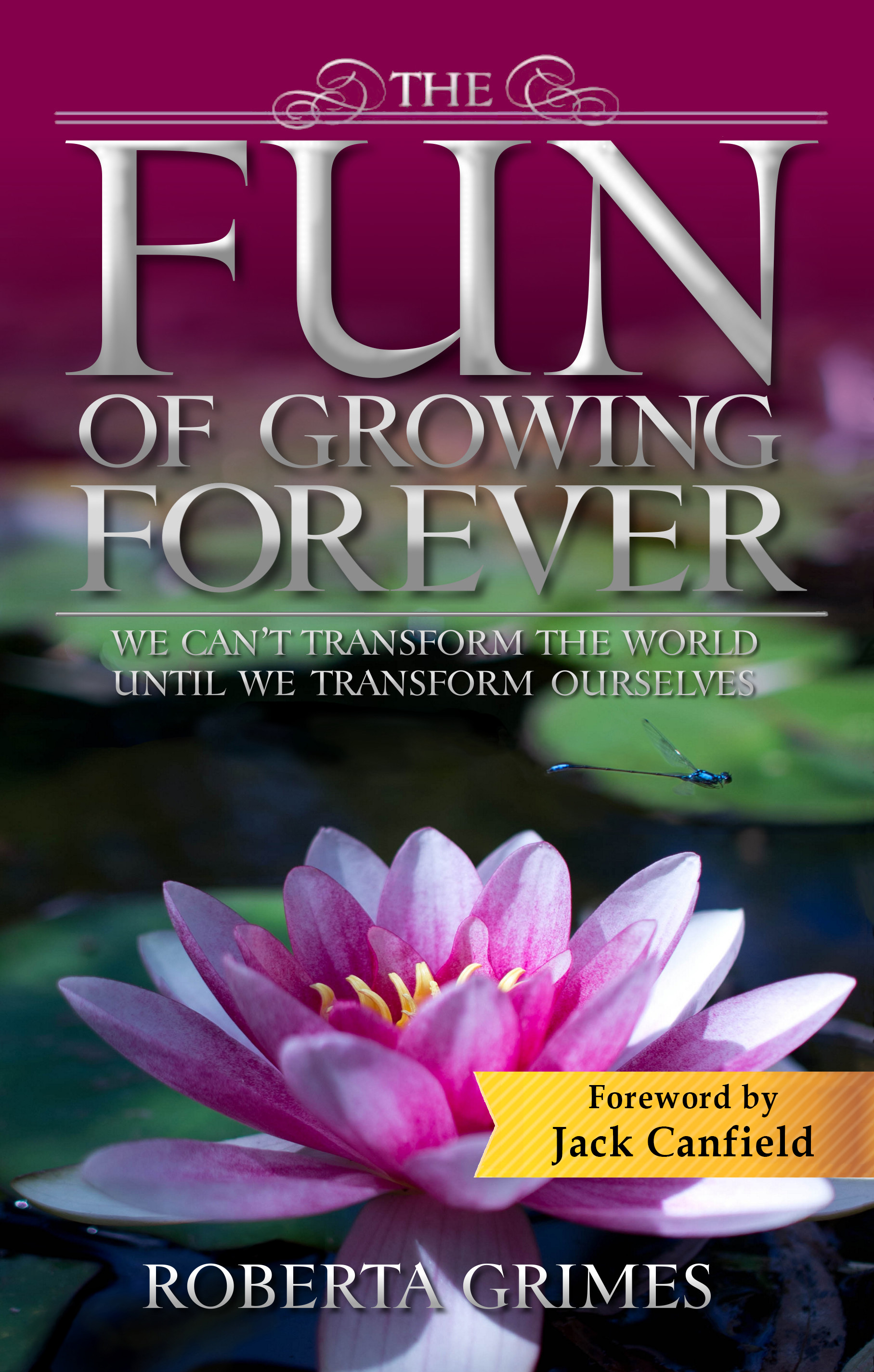Having talked last week about how it feels to die, let’s consider now the experience of being at the bedside of someone you love who is about to embark on that universal journey. Of course, some deaths are going to feel tragic. People who die unexpectedly or out of generational order are likely to distress their loved ones by the very act of dying. Life can hold so much pain! Please know, though, that the afterlife evidence overwhelmingly indicates that:
feel tragic. People who die unexpectedly or out of generational order are likely to distress their loved ones by the very act of dying. Life can hold so much pain! Please know, though, that the afterlife evidence overwhelmingly indicates that:
1) Virtually all deaths are planned. We plan our lives before we are born in conjunction with our spirit guides and with those who will be important in this lifetime and their guides, and as part of that process we plan in two or three exit-points that our higher consciousness can choose to take once we have done as much as we can do in terms of learning and growing in this lifetime. There is a lot of evidence that even what seem to be accidental deaths are planned exit points. Death is almost never a real accident.
2) Dying is a pleasant and joyous experience. Of course, as I admit in my previous blog post, getting to the point of death can be rough, but the death process itself is gentle and enjoyable. If a body seems to be dying in pain, there is plentiful evidence that the mind is already happily out of that body and doesn’t feel its pain. All really is well! So even though it is difficult to be losing a loved one, don’t worry about the person who is dying.
3) Nobody ever dies anyway! Our minds are part of eternal mind. We never began and we never will end, so the death of the body makes amazingly little difference to the person going through the experience.
Even knowing all of this, it still can be difficult to attend a death. It can help for you to know how death feels to the person dying, so please read my previous blog post on that topic. And here are some additional points to keep in mind as you sit beside the bed:
 1) Death is highly individual. It is impossible to generalize about any aspect of the process of dying because each of us handles it differently, and above all we want to be in control. No matter how the death may be affecting you, this is a major event for your loved one, so it is important to let him or her take the lead.
1) Death is highly individual. It is impossible to generalize about any aspect of the process of dying because each of us handles it differently, and above all we want to be in control. No matter how the death may be affecting you, this is a major event for your loved one, so it is important to let him or her take the lead.
2) Some of the dying want to talk, but some don’t. Your task is to listen, to answer questions, to offer love and comfort. I have found that sometimes reading psalms or poetry is welcome. Dying folks often stop communicating with the living once their deathbed visitors arrive, so as death approaches you may find that your reading or speaking isn’t wanted anymore. Instead, you might begin to observe what seems to be half of a telepathic conversation.
3) There usually is a period of lucidity a day or so before the death event. When a person near death suddenly seems to improve, to be more lucid and have more bodily strength, then that is a sign that death can be expected soon. As it comes closer, we sometimes witness seemingly impossible things: someone with end-stage dementia might begin to interact normally, or someone who is very weak might sit up vigorously and even stand.
4) You may see deathbed visitors. As Raymond Moody tells us in his wonderful 2010 book, Glimpses of Eternity, it is not uncommon for people at the bedside to glimpse a long-dead person or pet who has come to escort a loved one to the afterlife levels. You might even have a vision of the beautiful place where your loved one is soon to go, as if a wall of the room had dissolved and let you glimpse a whole new world beyond it.
5) You could see your loved one leaving the body. A faintly glowing mist might appear above the chest and head area. That mist might seem to assemble into a human form that either lies or sits above the body, still attached to it by a glowing cord. This part is highly individual, though! Don’t be concerned if you don’t see anything.
6) You could feel your loved one leaving the body. If you are hugging your loved one at the right moment, you might feel the energy of that newly-freed being pass right through your body; or if you are sitting by the bed, you might just feel a sense of lightness and even elation. Don’t be concerned if none of this happens for you, since it seems to be highly individual. You will know that the dying person’s silver cord has broken when the body ceases to breathe.
7) Don’t try to get the attention of your newly-freed loved one! Once the silver cord is broken, there is no way to re-animate that body. Begging the one you love to try to do that is counterproductive and dangerous. Even your bursting into tears can put your loved one at risk, since it is essential that newly-freed minds keep full attention on their deathbed visitors in order for them to make an easy transition to the afterlife levels of reality. For your loved one to be distracted by you now could mean that he or she might lose the ability to perceive those crucial guides.
8) Give the dying person permission to go! Some dying folks will hang on for days out of worry for us. Or, worse, their bodies might die but they might remain, feeling obligated to us. Rescuing people who have gone off-track is an act of charity, and from one of these rescuers I heard an awful story about a little boy who was found to be still in his hospital bed many years after his death because his mother had begged him not to die while she was away. Apparently he died during that night. The little boy’s mind, though, was still in his bed years later, obediently awaiting his mother’s return.
9) Your loved one may prefer to die in your absence. Death is the most personal act of our lives, and most folks prefer to do it without living people in the room. I am not sure why this is true, but I have a hunch that the dying want to spare us (and themselves) whatever anguish we might feel in witnessing their moment of death. So whenever you leave someone who is dying, tell your loved one that dying while you are away would be all right.
10)Take care of yourself! Losing a loved one is painful, even when we have plenty of warning. Once you have helped a parent or spouse or child through a healthy and positive death, don’t expect to snap right back. Give yourself permission to grieve. Learning what death is and where your loved one is now can help immeasurably to ease your worries; and spending extra time with family and friends, or volunteering to help others, can help you begin to think beyond yourself. But don’t forget to address  your own needs.
your own needs.
The one whose body has died is now healthy and happy. Death really is the ultimate illusion! No matter how old you are now, when measured against your eternal life this little period when you will be apart is going to be amazingly brief. You can rejoice in the certainty that a glorious eternal reunion is just around the corner!

 much understanding of the actual death process. You will be relieved to know that the afterlife evidence overwhelmingly suggests that for most of us a well-conducted death can be the best time of our lives. Fortunately, folks who have gone before have thoughtfully shared their own experiences, so it is possible to have a pretty good understanding of what our death will be like. Based on my reading of nearly two hundred years of abundant and consistent communications from the dead, here is a brief summary of how death feels from the perspective of the person living through the experience.
much understanding of the actual death process. You will be relieved to know that the afterlife evidence overwhelmingly suggests that for most of us a well-conducted death can be the best time of our lives. Fortunately, folks who have gone before have thoughtfully shared their own experiences, so it is possible to have a pretty good understanding of what our death will be like. Based on my reading of nearly two hundred years of abundant and consistent communications from the dead, here is a brief summary of how death feels from the perspective of the person living through the experience. body – are going to die now. But there are several energy bodies that we will be taking with us, and the process of separation can take awhile. It begins in our extremities, our hands and our feet, and if we are awake we may feel it happening like tiny threads breaking. Bodily separation doesn’t hurt, nor is it frightening; but it is interesting to be aware of the process. Gradually these surviving energy bodies will gather into our chest area and then will leave, either from the chest or more commonly through the top of the head.
body – are going to die now. But there are several energy bodies that we will be taking with us, and the process of separation can take awhile. It begins in our extremities, our hands and our feet, and if we are awake we may feel it happening like tiny threads breaking. Bodily separation doesn’t hurt, nor is it frightening; but it is interesting to be aware of the process. Gradually these surviving energy bodies will gather into our chest area and then will leave, either from the chest or more commonly through the top of the head. a dead person we feel terrific! We might still worry a bit about the loved ones we are leaving, but we feel ourselves now young and healthy and joyous and wonderfully enveloped in love. Our deathbed visitors are hugging us, feeling as solid as anyone living; our childhood dog might be jumping up on us or happy-dancing at our feet. We turn away from our deathbed with relief and with anticipation of the wonders to come, and we join those who have come for us in together lifting our spiritual vibration and approaching a glorious new world.
a dead person we feel terrific! We might still worry a bit about the loved ones we are leaving, but we feel ourselves now young and healthy and joyous and wonderfully enveloped in love. Our deathbed visitors are hugging us, feeling as solid as anyone living; our childhood dog might be jumping up on us or happy-dancing at our feet. We turn away from our deathbed with relief and with anticipation of the wonders to come, and we join those who have come for us in together lifting our spiritual vibration and approaching a glorious new world.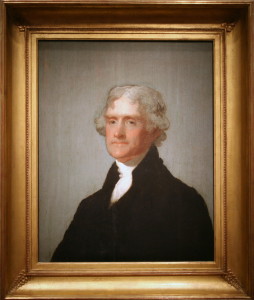 called
called  experimenting to see whether whites and free blacks could live in harmony on neighboring farms, but her death ended his interest in experimenting, as it ended his interest in many things.
experimenting to see whether whites and free blacks could live in harmony on neighboring farms, but her death ended his interest in experimenting, as it ended his interest in many things.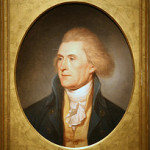 the death of his wife at thirty-three, at one time I even thought that if he had managed to find a new love later in life, that was fine and none of us had the right to judge him for it. But knowing Jefferson as I had come to know him, I became sadly confident that it never had happened. Seeing that his nephews, the Carrs, seemed to have fessed up to it, at the last minute I added to the 1993 edition of My Thomas a postscript naming one of them as the father of Sally Hemings’s children. Then after the novel was first published I did some more extensive research. I came to see that all the evidence pointed not to Thomas Jefferson and not to the Carrs, but to Thomas’s younger brother, Randolph.
the death of his wife at thirty-three, at one time I even thought that if he had managed to find a new love later in life, that was fine and none of us had the right to judge him for it. But knowing Jefferson as I had come to know him, I became sadly confident that it never had happened. Seeing that his nephews, the Carrs, seemed to have fessed up to it, at the last minute I added to the 1993 edition of My Thomas a postscript naming one of them as the father of Sally Hemings’s children. Then after the novel was first published I did some more extensive research. I came to see that all the evidence pointed not to Thomas Jefferson and not to the Carrs, but to Thomas’s younger brother, Randolph. 10)Thomas Jefferson had emotional issues that make his having been the father unlikely. He seems to me to have been emotionally incapable of fathering mixed-race children. There, I’ve said it. My reasons for feeling so strongly about this are going to have to wait for next week’s blog post, but when you see my reasoning I think it will make sense to you.
10)Thomas Jefferson had emotional issues that make his having been the father unlikely. He seems to me to have been emotionally incapable of fathering mixed-race children. There, I’ve said it. My reasons for feeling so strongly about this are going to have to wait for next week’s blog post, but when you see my reasoning I think it will make sense to you. are immensely entertaining. I began reading popular science a couple of decades ago as I tried to puzzle out the physics of the realities into which we graduate at death. What I learned was that many of the peculiarities of physics in the greater reality can be nicely explained once you have even a nodding acquaintance with quantum physics. I learned a lot more as well. And sadly, the more I learned about the issues that torment mainstream scientists now, the more I began to see how in nearly every case I was able to offer insights and explanations that came from my study of the afterlife evidence. Mainstream science has been off the rails and into the weeds for the past century because it still refuses to consider all the implications of quantum physics.
are immensely entertaining. I began reading popular science a couple of decades ago as I tried to puzzle out the physics of the realities into which we graduate at death. What I learned was that many of the peculiarities of physics in the greater reality can be nicely explained once you have even a nodding acquaintance with quantum physics. I learned a lot more as well. And sadly, the more I learned about the issues that torment mainstream scientists now, the more I began to see how in nearly every case I was able to offer insights and explanations that came from my study of the afterlife evidence. Mainstream science has been off the rails and into the weeds for the past century because it still refuses to consider all the implications of quantum physics.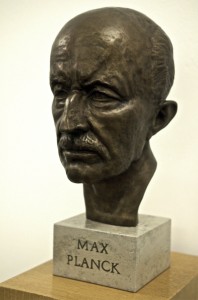
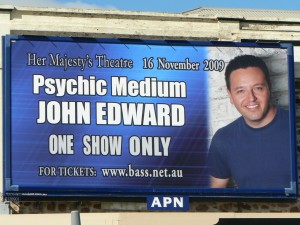 twentieth-century deep-trance mediums who were able to withdraw from their bodies altogether and allow their dead controls to speak using the medium’s vocal cords. There were some amazing deep-trance mediums working in the early twentieth century, and if the evidence of our survival produced by even one of them – Leonora Piper, perhaps, or Gladys Osborne Leonard – had been objectively studied by contemporary scientists, you would have lived your whole life knowing that it never is going to end. They produced such consistent and extensive proofs of what actually is going on that eventually they convinced even me. But, mediums reading the minds of the dead? Not so much.
twentieth-century deep-trance mediums who were able to withdraw from their bodies altogether and allow their dead controls to speak using the medium’s vocal cords. There were some amazing deep-trance mediums working in the early twentieth century, and if the evidence of our survival produced by even one of them – Leonora Piper, perhaps, or Gladys Osborne Leonard – had been objectively studied by contemporary scientists, you would have lived your whole life knowing that it never is going to end. They produced such consistent and extensive proofs of what actually is going on that eventually they convinced even me. But, mediums reading the minds of the dead? Not so much. Gospel words of Jesus or the afterlife evidence, I think it may be time for us to consider the possibility that Jesus’s mission may have been different from the one assigned to him by mainstream Christianity.
Gospel words of Jesus or the afterlife evidence, I think it may be time for us to consider the possibility that Jesus’s mission may have been different from the one assigned to him by mainstream Christianity.
 mainstream Christianity is wrong. I have never in decades of reading hundreds of communications from the dead found any evidence at all that God or any religious figure ever has judged anyone. Neither have I ever found an instance where a dead person says or hints that the death of Jesus redeemed him from punishment for his sins. So Christianity is wrong about that. It’s wrong.
mainstream Christianity is wrong. I have never in decades of reading hundreds of communications from the dead found any evidence at all that God or any religious figure ever has judged anyone. Neither have I ever found an instance where a dead person says or hints that the death of Jesus redeemed him from punishment for his sins. So Christianity is wrong about that. It’s wrong.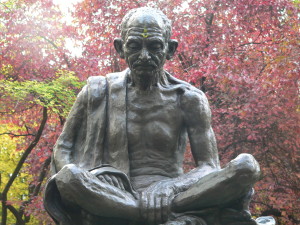 remain skeptical of every new afterlife-related detail, but at least I do investigate things! I look for answers. And after I have assembled enough evidence of all stripes to draw a rational conclusion, I draw that conclusion and explain where it came from. What these scientific Luddites do is to refuse to investigate anything that doesn’t fit their predetermined beliefs. They even presume to post on the Internet flat lies about the afterlife evidence and about those who would investigate the evidence. Have they no self-awareness at all?
remain skeptical of every new afterlife-related detail, but at least I do investigate things! I look for answers. And after I have assembled enough evidence of all stripes to draw a rational conclusion, I draw that conclusion and explain where it came from. What these scientific Luddites do is to refuse to investigate anything that doesn’t fit their predetermined beliefs. They even presume to post on the Internet flat lies about the afterlife evidence and about those who would investigate the evidence. Have they no self-awareness at all?






